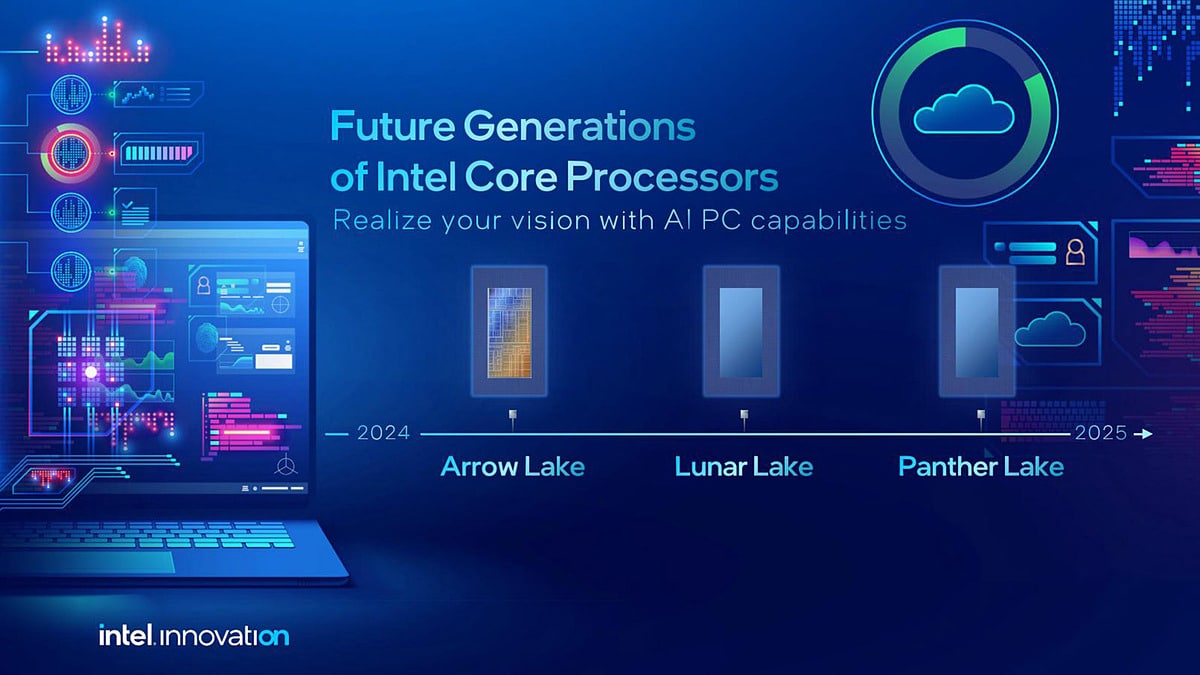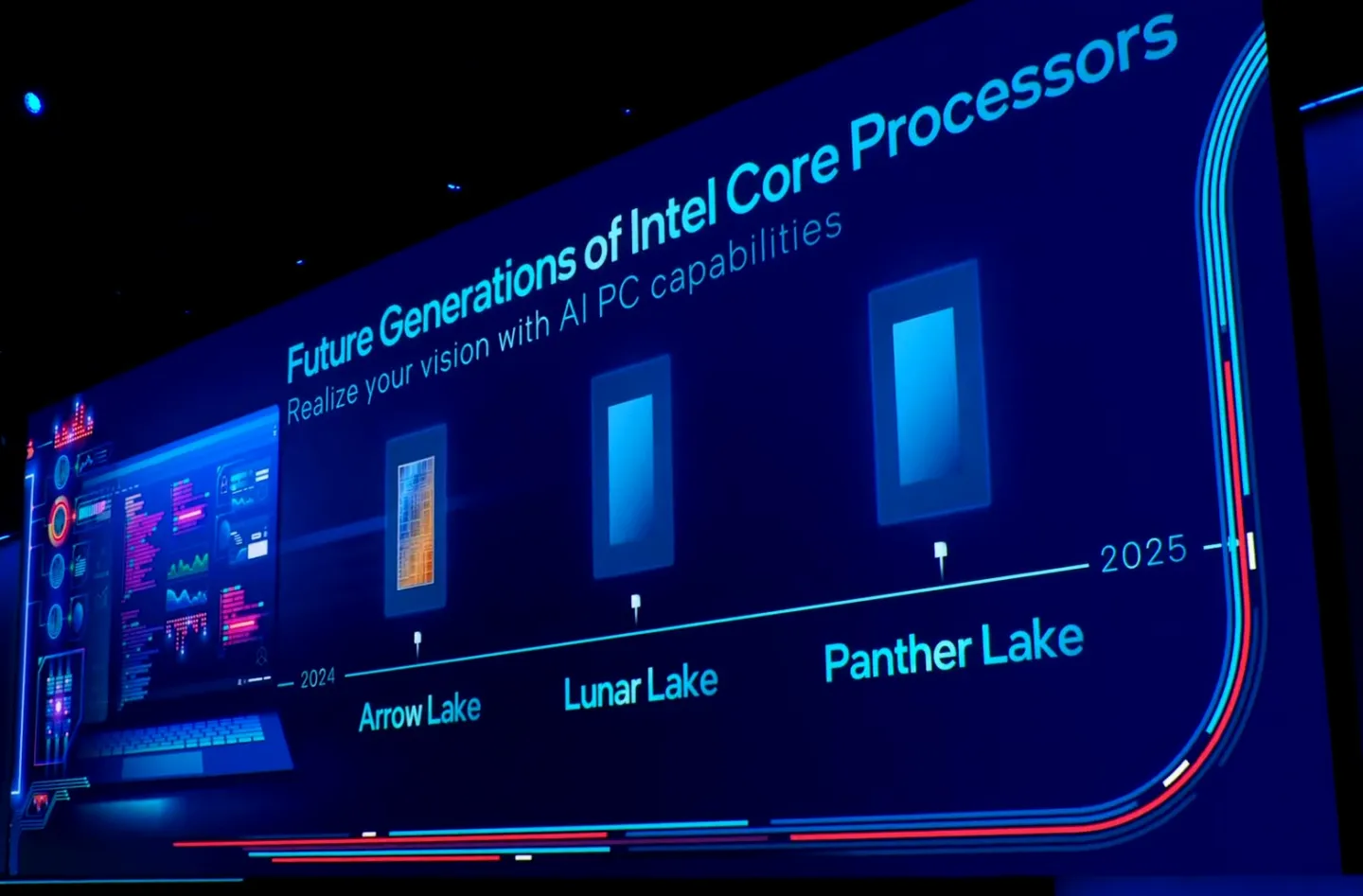Intel’s 2025 chip roadmap has generated a lot of buzz. It promises exciting advancements in technology.
In recent years, Intel has been at the forefront of the semiconductor industry. Their continuous innovation keeps pushing the limits of what is possible. The 2025 chip roadmap, featuring Lunar Lake and beyond, is set to reshape the future of computing.
This roadmap outlines Intel’s ambitious plans to enhance performance and efficiency. It aims to meet the growing demands of various industries. From powerful processors to energy-efficient chips, Intel’s vision for 2025 is expansive. This blog will delve into the details of Intel’s plans. We’ll explore how these advancements might impact technology and daily life. Stay tuned to discover the future of Intel’s chip technology.

Credit: hardwaretimes.com
Intel’s Vision For 2025
Intel has set ambitious goals for the year 2025. Their vision includes advancing chip technology. Lunar Lake is a significant part of this plan. This new chip architecture promises better performance. It also aims for energy efficiency. Intel’s roadmap outlines how they plan to achieve these goals.
Strategic Objectives
Intel wants to lead in semiconductor technology. They aim to deliver faster and more efficient chips. Meeting the demands of future applications is their top priority. They also focus on enhancing user experience. These strategic objectives guide Intel’s innovation efforts.
Technological Milestones
Several milestones mark Intel’s 2025 roadmap. Lunar Lake is a key milestone. It features advanced process technology. This chip will also offer improved power efficiency. Future milestones include even smaller nodes. They plan to use new materials and designs.
Intel also targets AI advancements. Their chips will support complex AI tasks. These technological milestones set the stage for next-gen computing. Intel’s roadmap outlines how they will achieve these milestones.

Credit: wccftech.com
Lunar Lake Innovations
Intel’s 2025 chip roadmap features Lunar Lake, promising efficient and powerful processors. These chips aim to improve computing performance. Exciting advancements are expected beyond Lunar Lake, marking a significant step in technology development.
In the rapidly evolving world of technology, Intel’s 2025 chip roadmap presents a fascinating look into the future. Among the standout developments is the Lunar Lake chip, promising a wave of innovations set to transform the tech landscape. Whether you’re a tech enthusiast or someone curious about the next big leap in computing, understanding these innovations will keep you a step ahead.
Key Features
Lunar Lake introduces cutting-edge architecture designed to optimize power efficiency and performance. Imagine your laptop lasting hours longer without compromising on speed or functionality. This chip aims to make that a reality by utilizing advanced node technology.
Moreover, Lunar Lake is poised to support enhanced artificial intelligence capabilities. This means your devices can process complex tasks with greater accuracy and speed. This feature could redefine your daily digital interactions, making them faster and smarter.
Intel also focuses on enhanced connectivity with Lunar Lake. Expect seamless integration with the latest wireless standards, ensuring that your devices are always in sync. This could fundamentally change how you connect and communicate in the digital age.
Expected Impact
The impact of Lunar Lake is expected to ripple across various sectors. For businesses, this could mean more efficient data centers and reduced energy costs. Imagine the potential savings and environmental benefits from such advancements.
For individual users, the enhancements in AI and connectivity could lead to more personalized and interactive experiences. Picture a world where your devices anticipate your needs before you even realize them. How could that change your daily routine?
Educators and learners could also benefit significantly. With more powerful and efficient chips, educational tools could become more immersive and interactive. This could open up new avenues for learning, making education more accessible and engaging.
As we stand on the brink of this technological leap, it’s worth asking: How will you harness these innovations in your personal and professional life? Understanding Lunar Lake’s potential can help you prepare for a future that’s not only exciting but also transformative.
Beyond Lunar Lake
Intel’s roadmap doesn’t stop at Lunar Lake. It ventures into new territories. This journey promises exciting advancements and innovations. As we explore beyond Lunar Lake, we see a future of remarkable possibilities. Let’s delve into what lies ahead in Intel’s chip development strategy.
Future Chip Developments
Intel focuses on enhancing performance and efficiency. Future chips will support faster processing speeds. They will consume less power and generate less heat. Expect chips with better artificial intelligence capabilities. These chips will handle complex tasks with ease.
Smaller transistors are on the horizon. They will enable denser chip designs. This means more power in a smaller space. Intel aims to push the boundaries of chip architecture. They plan to integrate more functionalities into future designs.
Emerging Technologies
New technologies will shape Intel’s future chips. Quantum computing is a key area of interest. Intel invests in this groundbreaking technology. It promises to solve problems current computers can’t handle.
Another focus is neuromorphic computing. This technology mimics the human brain. It can process information in ways traditional chips cannot. Intel’s chips will also advance in connectivity. They will support faster data transfer rates.
Expect significant improvements in security features. Protecting data is a top priority for Intel. Future chips will include advanced encryption capabilities. This ensures safer computing environments for users.

Credit: www.guru3d.com
Challenges And Opportunities
Intel’s 2025 chip roadmap, featuring Lunar Lake and beyond, presents both challenges and opportunities. As Intel aims to lead in the semiconductor industry, it must navigate fierce market competition and meet its sustainability goals.
Market Competition
The semiconductor market is highly competitive. Intel faces strong rivals like AMD and NVIDIA. These companies also invest in innovation and advanced technology. Intel must stay ahead by improving its chip performance and efficiency. This requires significant research and development. Staying competitive means offering unique features and better user experiences.
Sustainability Goals
Sustainability is a crucial focus for Intel. The company aims to reduce its carbon footprint. This involves using eco-friendly materials and processes. Meeting sustainability goals can be challenging yet beneficial. It can lead to cost savings and a positive brand image. Sustainable practices also attract environmentally conscious consumers and investors.
Frequently Asked Questions
What Is Intel’s 2025 Chip Roadmap?
Intel’s 2025 chip roadmap includes new technologies like Lunar Lake, targeting improved performance and efficiency.
What Makes Lunar Lake Special?
Lunar Lake offers enhanced performance with energy-efficient designs, aimed at better user experiences on various devices.
How Does Lunar Lake Impact Computing?
Lunar Lake impacts computing by delivering faster processing speeds and improved energy efficiency for modern applications.
When Will Intel Release Lunar Lake?
Intel plans to release Lunar Lake around 2025, aligning with their strategic roadmap for future innovations.
What Comes After Lunar Lake In Intel’s Roadmap?
After Lunar Lake, Intel’s roadmap includes further advancements, continuing the trend of performance and efficiency improvements.
Conclusion
Intel’s 2025 chip roadmap holds promise. Lunar Lake and beyond signal exciting advancements. These new chips could transform computing. Faster, more efficient processors are on the horizon. This development benefits consumers and businesses alike. Stay tuned for future updates. Intel’s journey continues to shape the tech world.
Innovation drives progress, and Intel leads the way. Keep an eye on their next moves. The future of computing looks bright.

